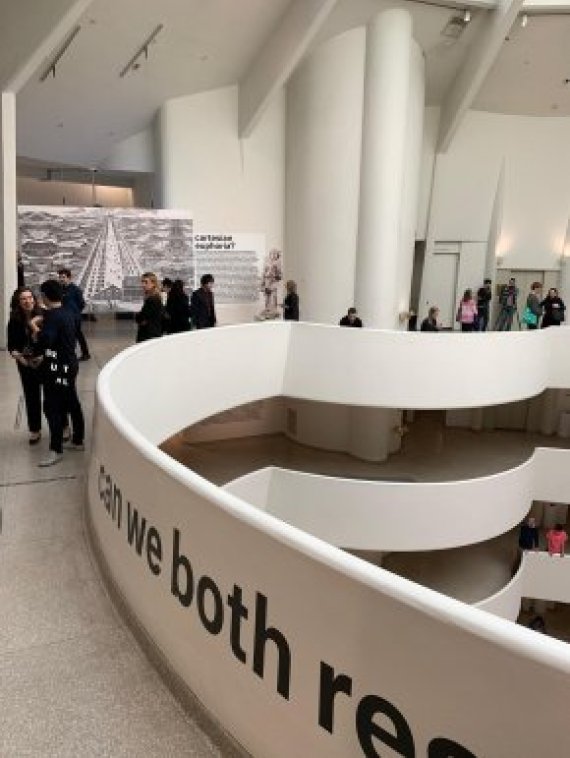WUR was represented at the opening by philosopher Clemens Driessen (Cultural Geography) and Lenora Ditzler (Farming Systems Ecology). They coordinated the Wageningen input in the exhibition, which was curated by the architect Rem Koolhaas. Koolhaas exhibits the developments taking place in the countryside in the spiral ‘rotunda’ of the Guggenheim. Agriculture is one of those developments.
Two meanings
The title Countryside, the Future has two meanings, according to Driessen. ‘It’s about the developments in the countryside, as well as their significance for the future of the world. It’s about the relationship between city and country, how things are part of a larger whole, and what that means. Artists and architects look at it in a different way to scientists.’
But it’s also about creating a podium to show how important agriculture is
Clemens Driessen
Preparations for the exhibition started over four years ago, when Rem Koolhaas came to the campus at the invitation of WUR president Louise Fresco. Since then, Koolhaas and his team have spent four days on the campus to orientate themselves. A group of ACT (Academic Consultancy Training) students compiled an overview of the latest developments in research and technology at WUR. Gradually, says Driessen, a story emerged for Koolhaas.

But agricultural technology in a museum? Is that art? ‘It reminds me of the urinal (The Fountain) with which Marcel Duchamp shocked the art world in 1917,’ says Driessen. ‘Taking things out of their usual context has an alienating effect. But it is also about creating a podium to show how important agriculture is, and to put it in the broader perspective of the latest developments. It’s about paying attention to how important changes in the world go unnoticed.’
The top floor of the exhibition is dedicated to agriculture. Wageningen provided the Phenovator, Pixelfarming and the Cartesian Countryside. The Phenovator is a piece of apparatus developed by plant geneticist Mark Aarts for monitoring photosynthesis. The original is used for research on the campus in Radix. A new version was made especially for the exhibition by the Wageningen company Phenovation.
Mosaic
Pixelfarming is a new approach to agriculture, in which crops are divided over patches (pixels) of 50 by 50 centimetres, each with their own crop. It is really an extreme form of strip cultivation. Seen from above, the pixels form a mosaic. PhD student Lenora Ditzler made a video about this project for the Guggenheim, in which several Wageningen scientists explain aspects of this research.
Countryside, the Future. Guggenheim, New York, 20 februari-14 augustus 2020

 Photo: Clemens Driessen
Photo: Clemens Driessen